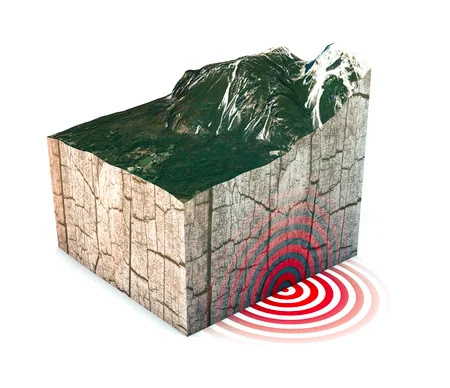The disaster in southern Turkey and northern Syria continues to draw the attention of experts around the world to its scientific assessment. The president of the Italian National Institute of Geophysics and Volcanoes, Professor Carlo Doglione, said in a statement to the Italian press that the recent earthquake caused some of the Turkish Anadolu plate to move about 3 metres west.
This is of course uncertain; The final results of the earthquake will be determined after access to satellite data, but this type of movement is already possible in tectonic plates.
Nature of the floor plates
To understand, we can first imagine that the Earth is a huge apple fruit, here the Earth's crust layer will be the crust of that thin apple, but it's actually 30 to 70 kilometers thick on Earth's continents.
However, the Earth's crust is different from the apple crust, it does not extend to the globe as a single connected mass, but it consists of 20 interlocking pieces in between called tectonic plates, and in overlapping it is similar to basal or puzzle pieces containing an image that must be supplemented by a piece.
These tectonic plates swim up the ground mantle layer, moving very little distance each year (1 to 20 centimetres) approaching, moving away from or frictioning each other.
Serious friction
As two tectonic plates approach each other in one place, they coexist together for a period of time and lag behind what scientists call "legionnaires," and may slip apart, but sometimes they overlap too hard and squeeze each other for a period, which may cause an earthquake.
Dougljoni assumes that the Marchid amber earthquake occurred in an area where two tectonic plates were heavily contacted, and with pressure dislocated between them, their limbs were displaced 3 metres away.
Active Areas
This is a reasonable figure, in fact, because this has happened before; During the 1906 San Francisco earthquake, the earthquake area was about 6 metres, and in Turkey itself the Anatolian fault was more than 2.5 metres during the 1999 Izmit earthquake.
Both Turkey and Greece are located in a "very active" seismic area due to complex movements between 4 tectonic plates, where the Eurasian and Arab plates move towards each other, pushing the small Anatolian plates west. The pressure in this area is also due to the northward movement of the African plate.
This creates two large friction lines: the first is the North Anatolian Cortex, the second is the East Anatolian Cortex, and the last earthquake was caused by a slide between the sides of the East Anatolian Cortex.
According to seismologists, due to these two legions, the likelihood of major earthquakes in the region remains very high due to high pressure levels between tectonic plates.



Comments
Post a Comment